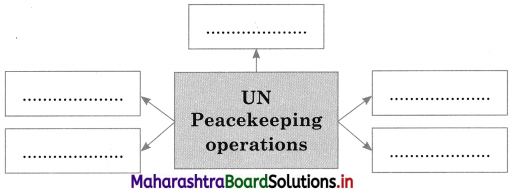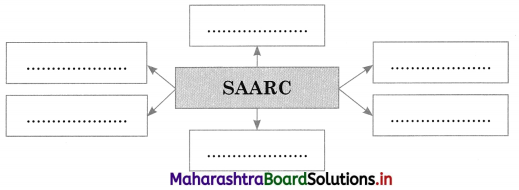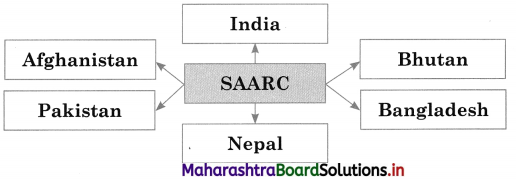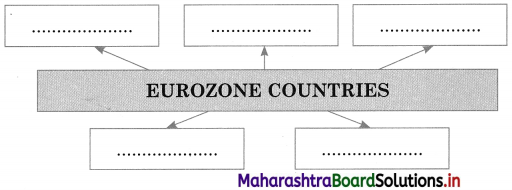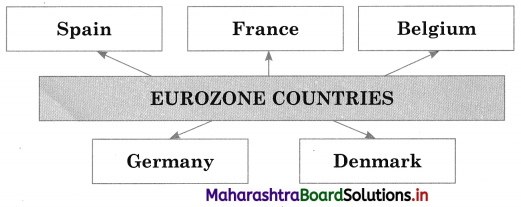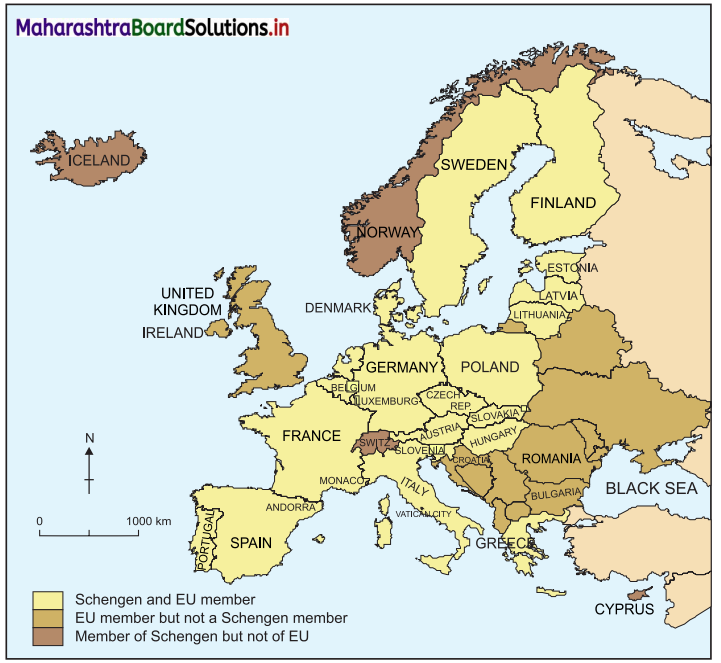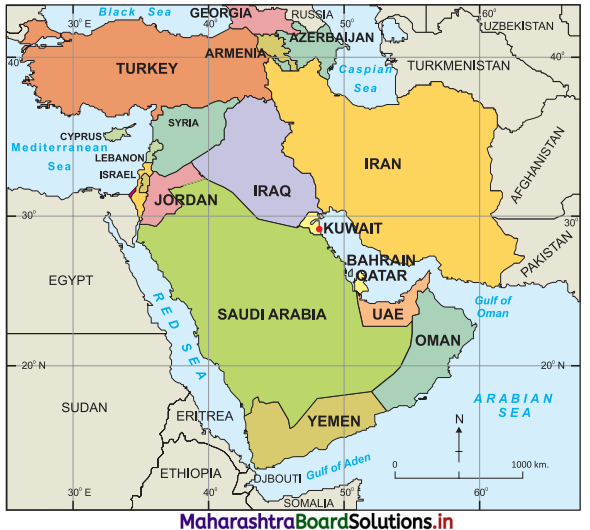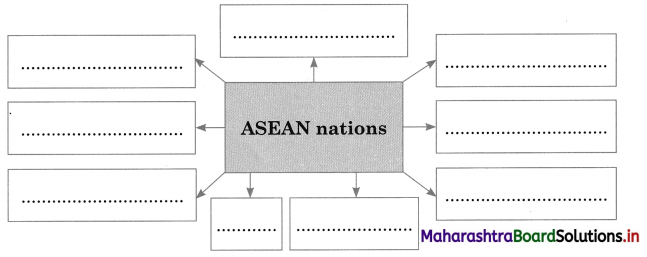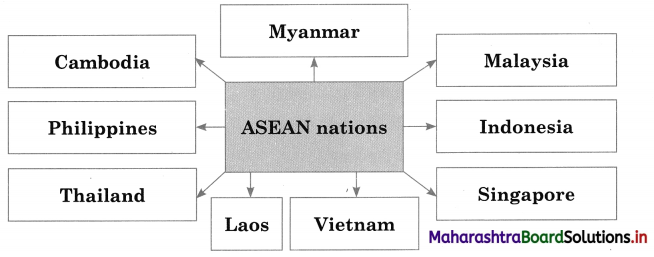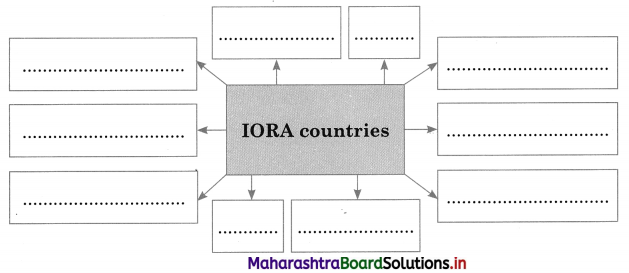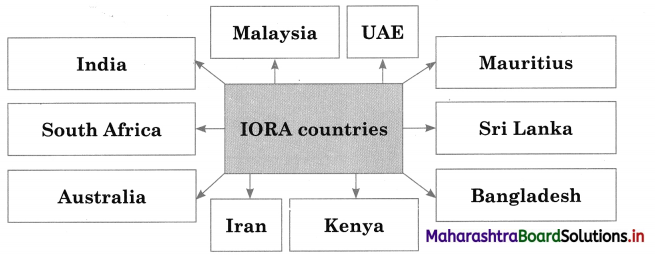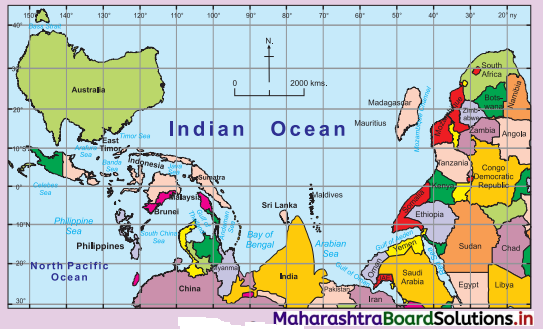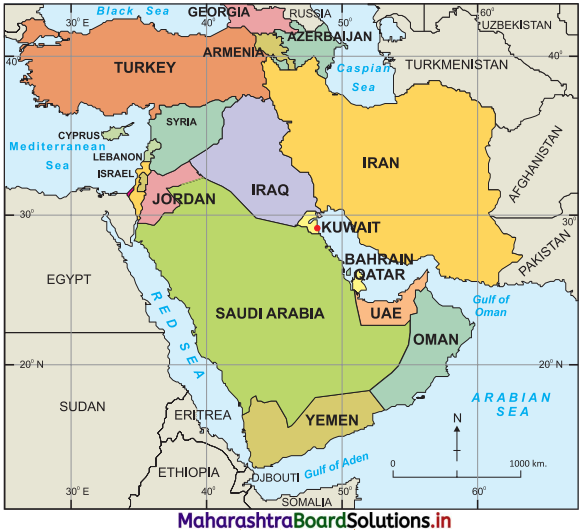Balbharti Maharashtra State Board Class 12 Psychology Important Questions Chapter 3 Personality Important Questions and Answers.
Maharashtra State Board 12th Psychology Important Questions Chapter 3 Personality
Choose the correct option and complete the following statements.
Question 1.
………………… are outgoing, friendly, and talkative individuals.
(a) Introverts
(b) Extroverts
(c) Ambiverts
Answer:
(b) Extroverts
Question 2.
In the ……………. interview, the direction of the interview is predetermined.
(a) structured
(b) unstructured
(c) projective
Answer:
(a) structured

Question 3.
Rorschach’s Ink-Blots are a …………… test of personality.
(a) self-report
(b) situational
(c) projective
Answer:
(c) projective
Question 4.
……………….. is a self-report technique of personality assessment.
(a) TAT
(b) MBTI
(c) WAIS
Answer:
(b) MBTI
Question 5.
Projective techniques are based on the ………………… perspective.
(a) Behavioural
(b) Psychoanalytic
(c) Trait
Answer:
(b) Psychoanalytic
Match the Pair
Question 1.
| Group A |
Group B |
| 1. S.R. Hathaway |
(a) TAT |
| 2. Hermann Rorschach |
(b) Trait theory of personality |
| 3. Morgan and Murray |
(c) Type perspective of personality |
| 4. McCrae and Costa |
(d) MMPI |
| 5. Gordon Allport |
(e) Humanistic perspective of personality |
| 6. Carl Jung |
(f) Ink-blot test |
|
(g) Five factor model |
Answer:
| Group A |
Group B |
| 1. S.R. Hathaway |
(d) MMPI |
| 2. Hermann Rorschach |
(f) Ink-blot test |
| 3. Morgan and Murray |
(a) TAT |
| 4. McCrae and Costa |
(g) Five factor model |
| 5. Gordon Allport |
(b) Trait theory of personality |
| 6. Carl Jung |
(c) Type perspective of personality |

State whether the following statements are true or false.
Question 1.
Mass media plays a major role in personality development.
Answer:
True
Question 2.
A person who is high on conscientiousness will be hardworking, punctual and responsible.
Answer:
True
Question 3.
Peer group influence on personality is always positive.
Answer:
False
Question 4.
According to the social cognitive perspective, observational learning plays an important role in personality development.
Answer:
True
Question 5.
Cardinal traits are the building blocks of personality.
Answer:
False
Question 6.
Individuals who are high on openness to experience tend to be sensitive and sometimes nonconforming.
Answer:
True

Question 7.
Sentence Completion Test is a self-report technique.
Answer:
False
Answer the following in one sentence each.
Question 1.
What is a trait?
Answer:
A trait is a relatively enduring and consistent way of thinking, feeling and acting.
Question 2.
Name the two types of interviews.
Answer:
The two types of interviews are Structured interview and Unstructured interview.
Question 3.
According to Allport, what are the categories of traits ?
Answer:
According to Allport, the three categories of traits are Cardinal traits, Central trails and Secondary traits.
Question 4.
Who developed the Thematic Apperception Test (TAT)?
Answer:
C.D. Morgan and Henry Murray developed the Thematic Apperception Test (TAT).
Question 5.
What was the early interpretation of personality?
Answer:
Personality was earlier interpreted as “projected behaviour” of an individual.

Question 6.
How do endocrine glands affect our personality?
Answer:
Over secretion or under secretion of hormones produced by the endocrine glands can adversely affect our personality.
Question 7.
What are some undesirable effects of excessive dependence on mass media by any person?
Answer:
Excessive dependence on mass media may lead to egocentrism, poor academic performance, sleep disturbances, etc.
Question 8.
What is the assumption of the type perspective of personality?
Answer:
The assumption of the type perspective of personality is that every individual has an unique personality type based on his/her physique, temperament and mental characteristics.
Question 9.
What does ambiverts refer to?
Answer:
In real life, most individuals tend to exhibit a blend of traits of introverts and extroverts, i.e., ambiverts.
Question 10.
Why do secondary traits play a minor role in personality?
Answer:
Secondary traits play a minor role in personality as they appear only in specific situations or under specific circumstances.
Question 11.
What does conscientiousness refer to?
Answer:
Conscientiousness concerns the way in which people control, regulate and direct their impulses.

Question 12.
What does neuroticism refer to?
Answer:
Neuroticism refers to a tendency to experience negative emotions such as anger, anxiety or depression more intensely and for longer periods than most people.
Define / Explain the concepts in 25 – 30 words each.
Question 1.
Introverts
Answer:
Carl Jung classified individuals into introverts and extroverts, based on the characteristics exhibited by them. Characteristics of introverts are:
- Introverts tend to look within themselves for stimulation
- they are shy, reserved, avoid social interactions
- they choose careers and hobbies that do not involve much social contact
- they may be sensitive to criticism.
Question 2.
Extroverts
Answer:
Carl Jung classified individuals into introverts and extroverts, based on the characteristics exhibited by them. Characteristics of extroverts are:
- Extroverts depend on external stimulation and evaluate themselves based on impressions of others
- they tend to be outgoing, cheerful, optimistic
- they choose careers and hobbies that bring them in contact with others.
- they tend to be enthusiastic, and full of energy.
Question 3.
Cardinal trait
Answer:
A trait is a relatively enduring and consistent way of thinking, feeling and acting. It is some distinctive characteristic of the person that leads him/her to behave in more or less consistent ways across situations and over a period of time. According to Gordon Allport, the categories of traits are Cardinal traits, Central traits and Secondary traits.
Cardinal trait is a single trait that dominates the individual’s personality. Every action of the person can be traced to the influence of this trait, for e.g., in case of Gandhiji honesty was the cardinal trait, in case of Napoleon, the cardinal trait was ambition.

Question 4.
Neuroticism
Answer:
Five factor model of personality is based on the trait perspective. It was proposed by Robert McCrae and Paul Costa. The five broad trait factors are-
- Openness to Experience
- Conscientiousness
- Extroversion
- Agreeableness
- Neuroticism.
Neuroticism refers to a tendency to experience negative emotions such as anger, anxiety or depression more intensely and for longer periods than experienced by other people. Those who score high on neuroticism tend to be irritable, fearful, emotionally unstable and interpret ordinary situations as threatening and hopeless. Individuals who score low on neuroticism tend to be more emotionally stable and less likely to be frustrated or experience loneliness, guilt and anger.
Question 5.
Self-report inventories
Answer:
Personality can be assessed using techniques such as Self Report Measures (Inventories), Behavioural Analysis Techniques and Projective Techniques. In self-report inventories such as Minnesota Multiphasic Personality Inventory (MMPI) 16 Personality Factor Questionaire (16 PFQ), etc., the individual provides information of his/ her personality by responding to statements/questions on the inventory. Responses are scored in quantitative terms and interpreted on the basis of norms that are developed for the test.
Answer the following questions in 35 – 40 words each.
Question 1.
How does the peer group influence personality of an individual?
Answer:
Peer groups refers to individuals of the same age group, e.g., classmates or sharing the same interests, e.g., members of a sports club. Influence of the peer group is most noticed in adolescence since it serves as a reference group. The influence of peer group on the person may be positive such as developing healthy gender attitudes, skills of communication, etc., or it may be negative e.g., developing aggressive tendencies, prejudices, etc.
Question 2.
Explain openness to experience as a factor in personality.
Answer:
According to the Five Factor Model proposed by Robert McCrae and Paul Costa, the five broad trait factors are:
- Openness to Experience
- Conscientiousness
- Extroversion
- Agreeableness
- Neuroticism
People who are open to experience are intellectually curious imaginative, appreciative of art, sensitive to beauty. They sometimes tend to think and act in nonconforming, adventurous ways. Those with low openness to experience tend to be cautious, pragmatic, consistent and some times may be dogmatic.

Question 3.
Explain the psychoanalytic perspective of personality.
Answer:
The word personality is derived from the Latin word ‘persona’. According to Gordon Allport, “Personality is the dynamic organization within-the individual of those psychophysical systems that determines his unique adjustments to the environment.” The main perspectives of studying personality are Psychoanalytic, Humanistic, Social Cognitive, Trait perspective, etc.
The Psychoanalytic perspective explains that early childhood experiences and the unconscious mind play a role in personality development. Sigmund Freud is the main proponent of the psychoanalytic perspective.
Question 4.
Elaborate on central traits
Answer:
A trait is a relatively enduring and consistent way of thinking, feeling and acting. It is some distinctive characteristic of the person that leads him/her to behave in more or less consistent ways across situations and over a period of time. According to Gordon Allport, the categories of traits are Cardinal traits, Central traits and Secondary traits.
Central traits are a ‘core’ or ‘basic’ characteristics that form the building blocks of personality. There are about 5-10 traits such as sensitivity, sociability, diligence, etc., that can best describe an individual’s personality.
Write short notes on the following in 50 – 60 words each.
Question 1.
Carl Jung’s Theory of Personality.
Answer:
The word personality is derived from the Latin word ‘persona’ which was used to refer to masks worn by actors during a stage performance, Thus, the meaning of personality was interpreted as ‘projected behaviour’ of an individual.
According to Gordon Allport, “Personality is the dynamic organization within the individual of those psychophysical systems that determines his unique adjustments to the environment.” Carl Jung classified individuals into introverts and extroverts, based on the characteristics exhibited by them.
(a) The characteristics of introverts are:
- they tend to look within themselves for stimulation
- they are shy, reserved, avoid social interactions
- they choose careers and hobbies that do not involve much social contact
- they may be sensitive to criticism.
(b) The characteristics of extroverts are:
- they depend on external stimulation and evaluate themselves based on impressions of others
- they tend to be outgoing, cheerful, optimistic
- they choose careers and hobbies that bring them in contact with others.
- they tend to be enthusiastic, and full of energy.
In real life, most individuals tend to exhibit a blend of traits of introverts and extroverts i.e. ambiverts.

Question 2.
Interview as an assessment tool of personality.
Answer:
The word personality is derived from the Latin word ‘persona’ which was used to refer to masks worn by actors during a stage performance, Thus, the meaning of personality was interpreted as ‘projected behaviour’ of an individual.
According to Gordon Allport, “Personality is the dynamic organization within the individual of those psychophysical systems that determines his unique adjustments to the environment.” Personality can be assessed using techniques such as Self Report Measures (Inventories), Behavioural Analysis Techniques and Projective Techniques. Behavioural Analysis techniques include Interview and Observation.
Interview – It is a process in which the interviewer collects information about the personality of an interviewee by asking him/her specific questions. The main types of interview, depending on the purpose of assessment are – structured interview and unstructured interview.
(i) Structured interview – The number, type and sequence of questions to be asked in the interview are pre-determined. The answers expected are also specific. This type of interview is used where exact quantification is required, for e.g., industrial psychologists use structured interviews to select employees for a job.
(ii) Unstructured interview – The type and sequence of questions to be asked by the interviewer are not pre-determined. Detailed answers can be given and scoring is often subjective. It is employed by clinical psychologists, counsellors, etc.
Question 3.
Projective techniques.
Answer:
Projective techniques emerged from the psychoanalytic perspective. The individual responds freely to relatively unstructured or ambiguous stimuli/material. It is assumed that individuals project their own personality onto these stimuli, often revealing personal conflicts, hidden urges, coping styles, etc. Projective techniques cannot be scored in an objective manner. They use various materials like ink-blots, ambiguous pictures, incomplete sentences, word associations, etc. Main projective techniques include Rorschach’s The Ink-Blot Test, Tests, Thematic Apperception Test (TAT), Sentence Completion Test, etc.
Question 4.
Rorschach’s Ink-Blots
Answer:
Projective Techniques are a method of personality assessment. Projective techniques emerged from the psychoanalytic perspective. The individual responds freely to relatively unstructured . or ambiguous stimuli/material. It is assumed that individuals project their own personality onto these stimuli, often revealing personal conflicts, coping styles, etc. Projective techniques cannot be scored in an objective manner. They use various materials like ink-blots, ambiguous pictures, incomplete sentences, word associations, etc.
This test was developed by Hermann Rorschach in 1921. It uses ten irregular-ink-blots (five in black and white, five in colour.) standing against a white background. Each ink-blot is shown in a fixed number of ways and the subjects are asked to describe what they see in each card. The subjects are allowed to hold the card in any position they want, whether it’s upside down or sideways. Analysis of this test requires trained and skilful examiner.

Answer the following questions with given points in 80 – 100 words each.
Question 1.
Elaborate on the various projective techniques.
Points:
(i) Rorschach’s Ink-Blots
(ii) Thematic Apperception Test
(iii) Sentence Completion Test
Answer:
The word personality is derived from the Latin word ‘persona’ which was used to refer to masks worn by actors during a stage performance, Thus, the meaning of personality was interpreted as ‘projected behaviour’ of an individual.
According to Gordon Allport, “Personality is the dynamic organization within the individual of those psychophysical systems that determines his unique adjustments to the environment.”
The main assessment methods of personality are Self Report Inventories, Behavioural Analysis techniques and Projective Techniques. Projective techniques emerged from the psychoanalytic perspective. The individual responds freely to relatively unstructured or ambiguous stimuli/material. It is assumed that individuals project their own personality onto these stimuli, often revealing personal conflicts, coping styles, etc. Projective techniques cannot be scored in an objective manner. They use various materials like ink-blots, ambiguous pictures, incomplete sentences, word dissociations, etc. Main projective techniques include Rorschach’s Ink-Blot Tests, Thematic Apperception Test (TAT), Sentence Completion test, etc.
(i) Rorschach’s Ink-Blot Test:
This test was developed by Hermann Rorschach in 1921. It uses ten irregular-inkblots (five in black and white, five in colour.) standing against a white background. Each inkblot is shown in a fixed number of ways and the subjects are asked to describe what they see in each card. The subjects are allowed to hold the card in any position they want, whether it’s upside down or sideways. Analysis of this test requires trained and skilful examiner.
(ii) Thematic Apperception Test (TAT) :
The TAT was developed by Morgan and Murray in 1935. It requires the individual to look at the picture and to interpret it by telling a story. The individual is invited to say what led up to the scene in the picture, why such events occurred, what is currently happening and what the consequences will be?
(iii) Sentence-completion test:
Sentence completion test (SCT) is a type of projective technique used to assess personality. The individual is given a series of incomplete sentences and is asked to complete them in his/her own words, for e.g., My mother …………., My greatest fear is ………….. It is assumed that the
endings provided by the person will reflect their motivation, urges, internal conflicts etc.

Answer the following questions in 150 – 200 words each.
Question 1.
Define personality. Explain the factors that affect personality.
Answer:
The word personality is derived from the Latin word ‘persona’ which was used to refer to masks worn by actors during a stage performance, Thus, the meaning of personality was interpreted as ‘projected behaviour’ of an individual.
According to Norman Munn, “Personality is a unique combination of individual’s physical structure, needs, interests, abilities and aptitudes.” According to Gordon Allport, “Personality is the dynamic organization within the individual of those psychophysical systems that determines his unique adjustments to the environment.” Personality is shaped by biological factors like heredity and endocrine glands and by psychosocial factors like family, peer groups, school and culture.
(i) Heredity – It implies the genetic inheritance of an individual. Heredity affects the physical characteristics, for e.g., height, physique, etc. It also influences the self-concept which in turn influences personality.
(ii) Endocrine glands – Personality is shaped by endocrine glands like pituitary, thyroid, adrenals, pancreas, gonads, etc. Over secretion or under secretion of hormones produced by these glands can adversely affect our personality, for e.g., over secretion of growth hormone by the pituitary gland leads to gigantism (very tall).
(iii) F amily – As the first agency of socialization, the fqmily exerts a strong influence on personality. Aspects of family such as family structure, atmosphere, and relationships, family interactions and childrearing practices influence personality, for e.g., if parents show rejection or over protection, etc., towards the child, it leads to low self-esteem and has adverse effects on the personality.
(iv) Peer group – It refers to individuals of the same age group, e.g., classmates or sharing the same interests, e.g., members of a sports club. Influence of the peer group is most noticed in adolescence since it serves as a reference group. The influence of peer group on the person may be positive such as developing healthy gender attitudes, skills of communication, etc., or it may be negative e.g., developing aggressive tendencies, prejudices, etc.
(v) School – Various aspects of school such as teaching-learning process, academic and co-curricular facilities, role of the teachers, school location, management and discipline, etc., influence the child’s personality, for e.g., teachers who are well qualified, creative, build a rapport which the students, tend to motivate students and help to develop a good personality.
(vi) Mass media – It includes print media e.g., newspapers; audio-visual media e.g., T.V. and new media e.g., internet. Media is a source of information, education, entertainment and even socialization. It has a considerable effect on our value system, behaviour patterns and personality. However, excessive dependence on media may lead to egocentrism, poor academic performance, difficult in concentration, sleep disturbance, etc.
(vii) Cultural factors – Culture refers to the customs, values and social behaviour of a particular society. Every culture has its own set of beliefs, norms, expectations, etc., which influence the thoughts, feelings and behaviour of its members.

Question 2.
Discuss the various methods of personality measurement.
Answer:
The word personality is derived from the Latin word ‘persona’ which was used to refer to masks worn by actors during a stage performance, Thus, the meaning of personality was interpreted as ‘projected behaviour’ of an individual.
According to Gordon Allport, “Personality is the dynamic organization within the individual of those psychophysical systems that determines his unique adjustments to the environment.” According to Norman Munn, “Personality is a unique combination of individual’s physical structure, needs, interests, abilities and aptitudes
The main methods to assess personality include Behavioural Analysis techniques, Projective techniques and Self-Report Measures (Personality inventories).
(i) Behavioural Analysis
Behavioural Analysis techniques such as Interview and Observation can provide information about an individual’s personality in a variety of situations.
(a) Interview – It is a process in which the interviewer collects information about the personality of an interviewee by asking him/her specific questions. The main types of interview depending on the purpose of assessment are: structured interview and unstructured interview
1. Structured interview – The number, type and sequence of questions to be asked are pre-determined. The answers expected are also specific. This type of interview is used where exact quantification is required, for e.g., industrial psychologists use structured interviews to select employees for a job.
2. Unstructured interview – The type and sequence of questions to be asked by the interviewer are not pre-determined. Detailed answers can be given and scoring is often subjective. It is employed by clinical psychologists, counsellors, etc.
(b) Observation – The types of observation include Naturalistic observation, Laboratory observation, Participant observation, Non-participant observation, etc. This method is useful only when there is a trained observer, clear objectives and adequate guidelines for observations.
(ii) Self-Report Techniques (Inventories)
The individual provides information about his/her personality by responding to statements/ questions on the inventory, for e.g., Minnesota Multiphasic Personality Inventory (MMPI), Cattell’s 16 Personality Factor Questionnaire, etc. Responses are scored in quantitative terms and interpreted on the basis of norms that are developed for the test.
(a) Rorschach’s Ink-Blot Test: This test was developed by Hermann Rorschach in 1921. It uses ten irregular-inkblots (five in black and white, five in colour.) standing against a white background. Each inkblot is shown in a fixed number of ways and the subjects are asked to describe what they see in each card. The subjects are allowed to hold the card in any position they want, whether it’s upside down or sideways. Analysis of this test requires trained and skilful examiner.
(b) Thematic Apperception Test (TAT): The TAT was developed by Morgan and Murray in 1935. It requires the individual to look at the picture and to interpret it by telling a story. The individual is invited to say what led up to the scene in the picture, why such events occurred, what is currently happening and what the consequences will be?
(c) Sentence-completion test: Sentence completion test (SCT) is a type of projective technique used to assess personality. The individual is given a series of incomplete sentences and is asked to complete them in his/her own words, for e.g., My mother …………., My greatest fear is ………. It is assumed that the endings provided by the person will reflect their motivation, urges, internal conflicts etc.
(iii) Projective Techniques
Projective techniques emerged from the psychoanalytic perspective. The individual responds freely to relatively unstructured or ambiguous stimuli/material. It is assumed that individuals project their own personality onto these stimuli, often revealing urges/desires, personal conflicts, coping styles, etc. Projective techniques cannot be scored in an objective manner. They use various materials like ink-blots, ambiguous pictures, incomplete sentences, word , dissociations, etc.
Main projective techniques include Rorschach’s Ink-Blot Tests, Thematic Apperception Test (TAT), Sentence Completion Test, etc.
![]()
![]()
![]()
![]()
![]()
![]()
![]()
